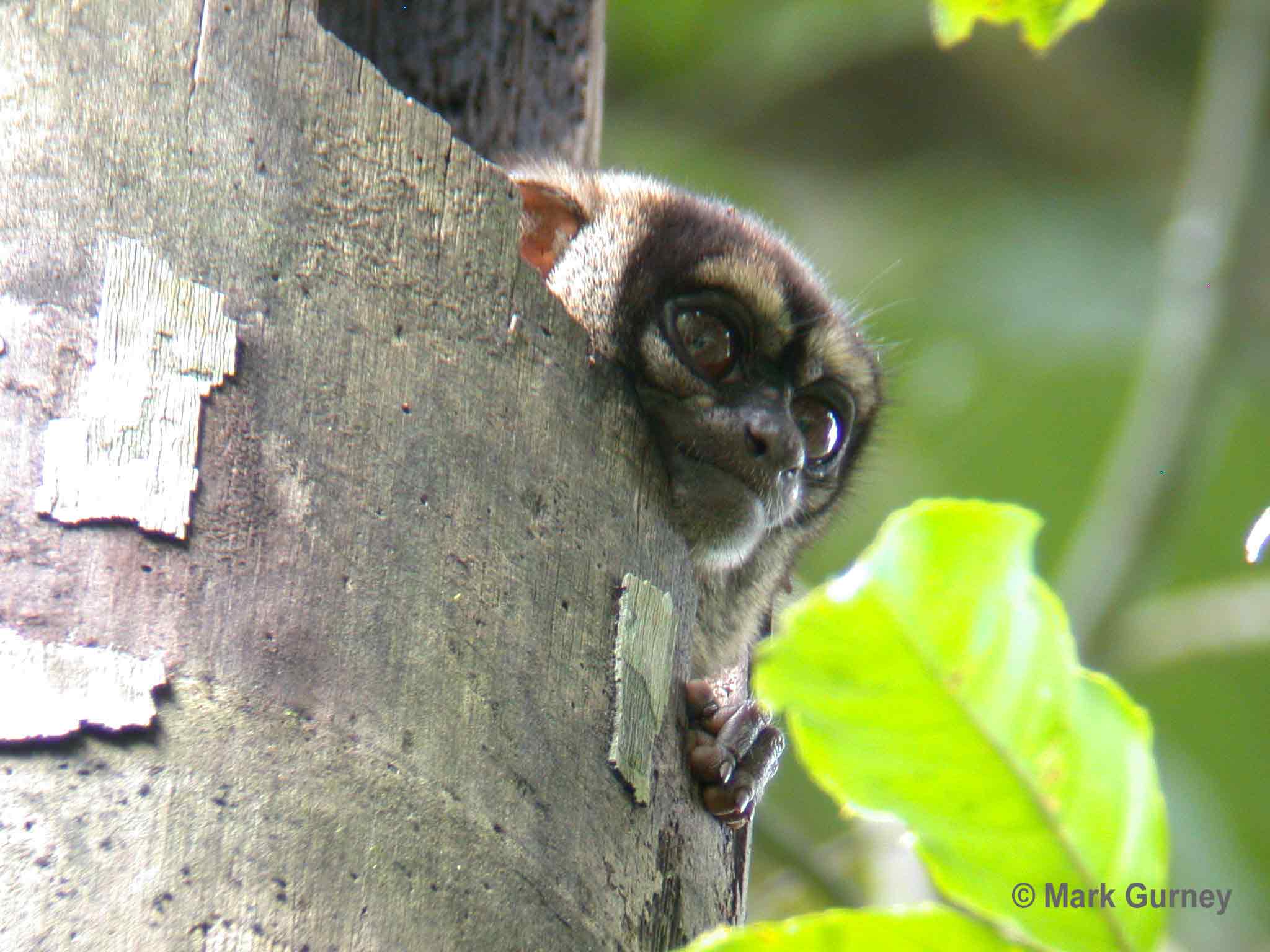Night Monkey (Aotus trivirgatus) Class: Mammalia, Order: Primates, Family: Aotidae, Genus: Aotus, Species: trivirgatus
IUCN Status: Vulnerable
Scientists used to consider all of the nocturnal monkeys in South America as subspecies of Aotus lemurinus, and all were referred to as "Night Monkeys." Recently however, there has been debate about whether the six to seven subspecies should each be elevated to full species status. The IUCN, the international body that evaluates and regulates species' endangerment levels and conservation statuses, now recognizes six different Night Monkey species, with Aotus trivirgatus having the broadest distribution. They are found throughout the tropical forests between Panama and northern Argentina.
These Night Monkeys have thick wooly coats that tend to be grayish in color. They have three black stripes on their heads. Their faces are often described as "owl-like" because they are flat with large, round eyes. These Night Monkeys have body lengths varying between 9 and 19 inches (23 and 48 cm) and tails that are about 16 inches (41 cm) long. They weigh between 2.2 and 4.5 pounds (1 and 2 kilograms).
Members of this species spend their days hidden in tree hollows or vine tangles. At night, they essentially have the trees to themselves and move between the canopy and the ground feeding on fruits, leaves, insects, and sometimes birds and small mammals. Although they are nocturnal, they still require some light and are most active when the moon is full.
These Night Monkeys live in groups consisting of a pair that breeds for life and their offspring. Females usually give birth to only one infant at a time after a 150 day gestation period. The father (or sometimes an older sibling) carries the infant on its back except during nursing. The young are mature in 2 years and have a lifespan of about a decade. These monkeys have sacks under their chins, which amplify vocalizations that are used for communication.
Night Monkeys are often hunted for their meat, fur, or for use as pets. They have also been used in medical experiments. Although there are now strict regulations on trading this species, habitat destruction continues to pose a major threat.
(http://www.szgdocent.org/resource/pp/p-doucli.htm)
(http://www.americazoo.com/goto/index/mammals/94.htm)
(http://www.iucnredlist.org/search/details.php?species=1801)
CLICK HERE FOR MORE EXTRAORDINARY
ANIMALS and PLANTS OF YASUNÍ,
THE MOST BIODIVERSE FOREST KNOWN ON EARTH
Yasuní Biodiversity Main Page
|

